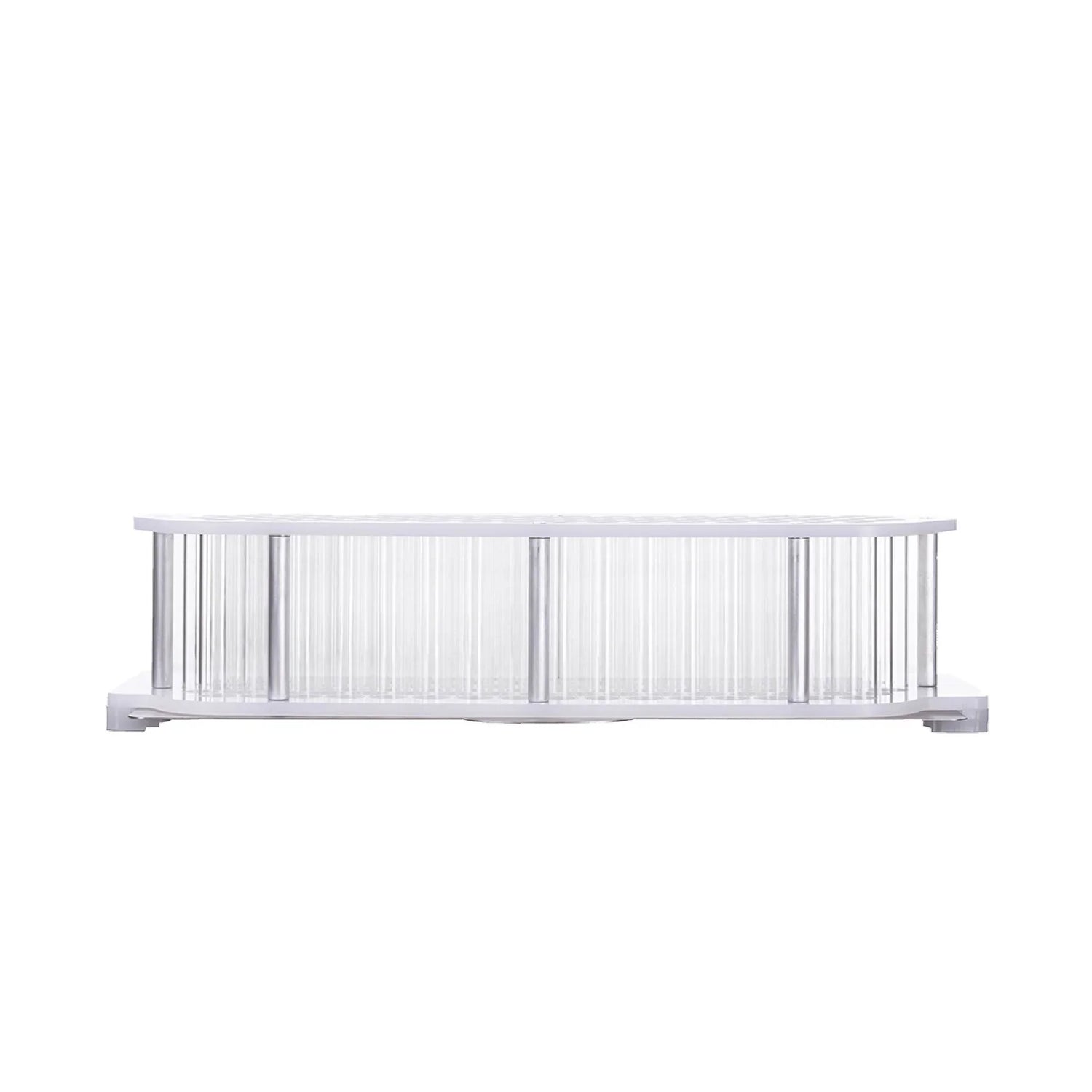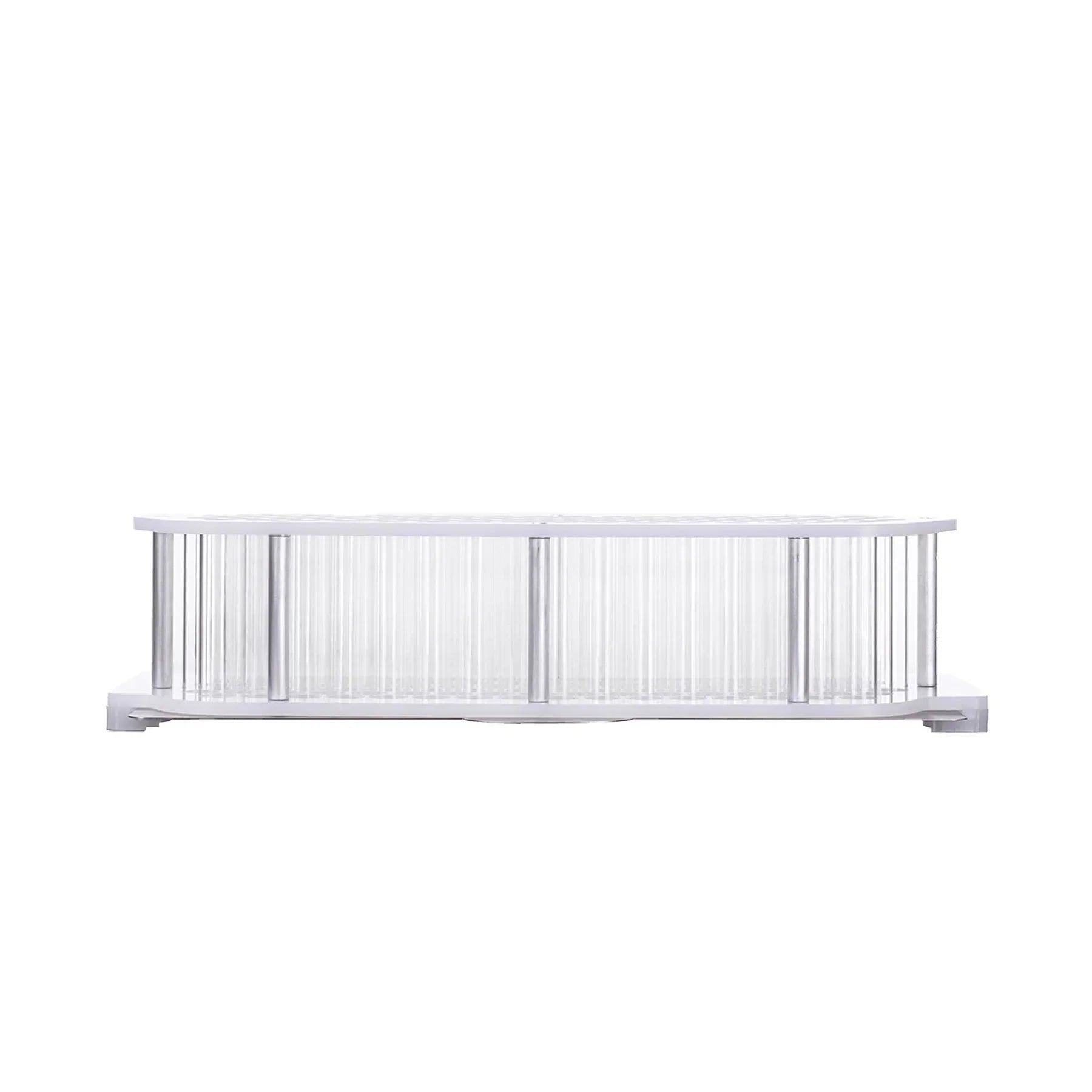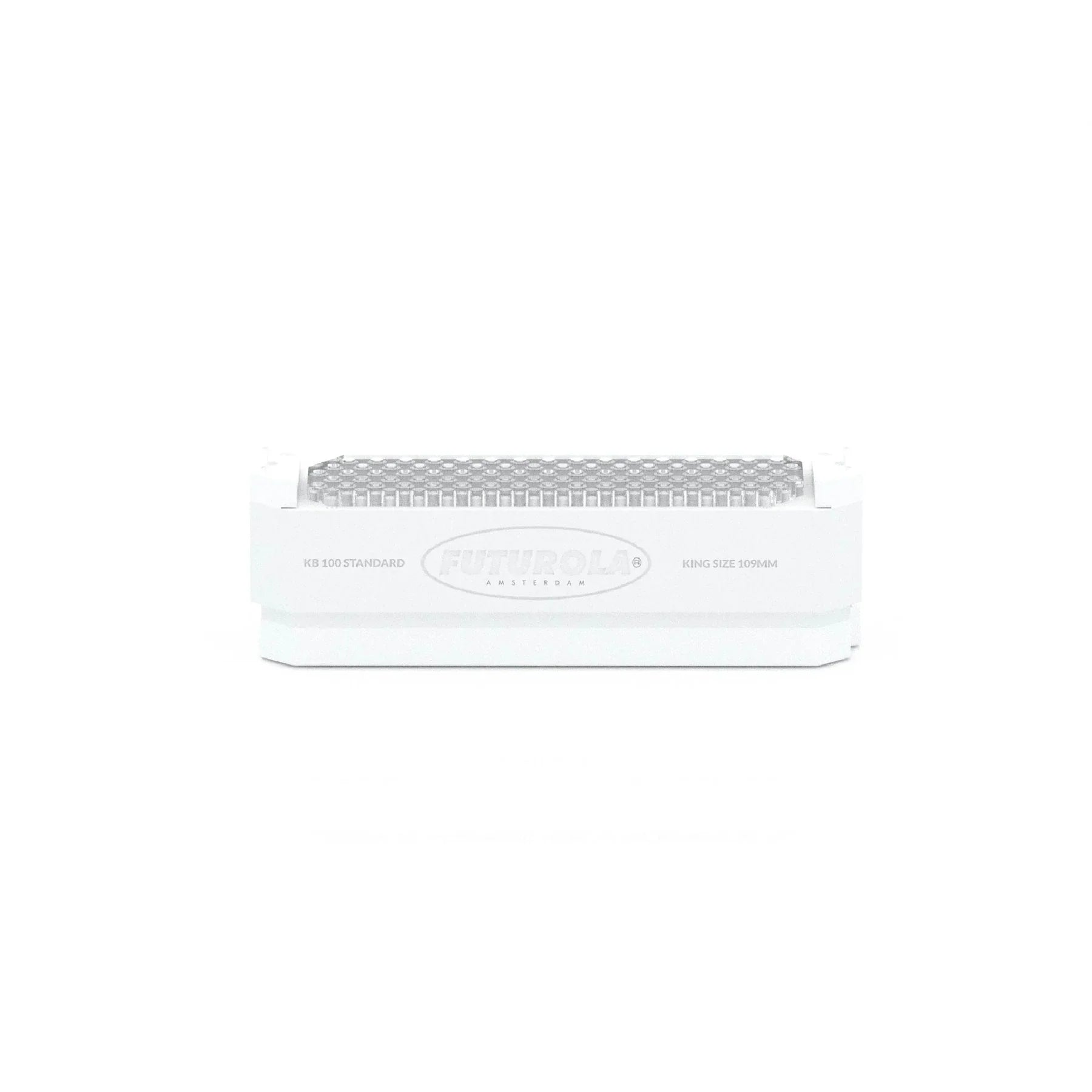The Dutch Crown device is an innovative tool designed to make the closure of cones consistent, efficient, and professional. In high-volume production, even the smallest inefficiency can cause delays or inconsistencies. This is particularly true during the finishing stage, where cones must be sealed at the top. Traditionally, this process has been done by hand, often resulting in uneven folds, wasted time, and variable product quality. The Dutch Crown fold solves this challenge by applying a uniform closure to every cone, securing its contents and elevating its appearance.
Learning how to use the device properly ensures that production teams can take full advantage of its capabilities. The device was created with simplicity in mind, requiring minimal training while producing highly consistent results. When combined with automated filling equipment, the closure stage becomes part of a streamlined system that saves time, reduces waste, and increases overall output.
This guide provides a detailed walkthrough of how to use the Dutch Crown device effectively. Each step in the process, from preparation, to setup, to sealing, is explained in depth. Practical tips for maintaining efficiency, avoiding errors, and integrating the device into larger workflows are also included.
Why Proper Use of the Dutch Crown Device is Essential
The effectiveness of the dutch crown device depends not only on its design but also on how it is used. While the mechanism itself is simple, proper operation ensures maximum efficiency, consistent results, and reduced waste. Incorrect use, on the other hand, can result in uneven folds, misaligned cones, or unnecessary strain on the device. Learning to use it properly is therefore a matter of both efficiency and longevity.
Proper use ensures that cones receive the intended Dutch Crown fold, which adds structural integrity. This uniform closure prevents spillage and protects the cone during handling and transport. For distributors and customers, the professional presentation reinforces perceptions of quality, making it a valuable detail in competitive markets.
Another reason proper use is critical is its impact on workflow efficiency. Automated systems only achieve their full potential when each component operates as intended. A well-operated closure device works seamlessly with filling machines, grinders, and preparation accessories, eliminating bottlenecks and keeping production lines running smoothly.
Finally, proper use extends the life of the device itself. Regular cleaning, correct alignment of cones, and careful operation reduce wear and tear. As a result, producers avoid unnecessary downtime or costly repairs. By committing to correct usage from the beginning, operations benefit from greater consistency, efficiency, and long-term reliability.
Efficiency Gains from Correct Operation
When used properly, the dutch crown device speeds up production significantly. Manual folding can take several seconds per cone, adding up quickly in large batches. By contrast, the device seals hundreds of cones in the same time frame, transforming workflow efficiency.
Correct operation ensures that cones are properly aligned and seated before closure, reducing the risk of misfolds. This minimizes waste and saves material that would otherwise be lost due to errors. When combined with the time savings, this reduction in waste provides substantial financial benefits over time.
Efficiency gains are not just about speed, they also involve freeing up labor. Teams that once spent hours sealing cones manually can redirect their efforts to packaging, labeling, or quality assurance, making the entire operation more balanced and productive.
Consistency in Product Quality
Consistency is another major benefit of using the device correctly. Manual twisting produces cones with uneven tops, some too tight and others too loose. This variability negatively impacts presentation and reliability. A properly operated Dutch Crown fold, however, delivers uniformity across every batch.
Consistency matters because customers notice when products vary. Cones that look identical reinforce brand credibility and signal professionalism. Correct use of the device ensures that every cone, regardless of when it was produced, meets the same standard.
Over time, this consistency reduces quality control issues. Producers spend less time sorting or rejecting cones, which saves both time and money. Instead, more of the output is ready for packaging and distribution immediately.
Step-by-Step Process: How to Use a Dutch Crown Device
Learning how to use the dutch crown device involves a series of clear steps. Each step is designed to maximize efficiency while protecting the integrity of the cones. The process begins with preparation, moves through setup, and ends with the sealing mechanism itself. Following these steps carefully ensures that the device performs at its highest potential.
Preparation is critical before using the device. Cones must be filled evenly, material must be ground consistently, and trays must be organized. Once cones are ready, they are loaded into the device for closure. The sealing mechanism applies a uniform fold across every cone, completing the process in seconds.
What sets this device apart is its combination of speed and precision. The Dutch Crown fold is applied identically across hundreds of cones, ensuring that no product is wasted and no cone is left unfinished. By mastering the process, producers achieve professional results that align with both efficiency and quality goals.
Step 1: Preparing the Cones and Material
The first step is to prepare both cones and material for sealing. Cones must be filled evenly, with consistent distribution of ground flower. Uneven fills create problems during closure, as some cones may collapse while others fail to seal properly.
Grinding the material with Shredders ensures the right texture for filling. A medium, fluffy grind allows material to settle evenly, reducing airflow issues and minimizing clogs. Proper grinding also reduces spillage during closure, which maintains cleanliness in the workspace.
Preparation also involves ensuring that cones are free of defects. Any cone with warped paper or irregular crutches should be removed before sealing. By addressing these details early, producers avoid issues later in the process, ensuring smoother operation of the closure device.
Step 2: Loading Cones into the Device
Once cones are prepared, they must be loaded into the closure device. This step requires accuracy, as misaligned cones can result in uneven folds or damaged papers. Each cone must be placed upright in the tray, ensuring stability during the sealing process.
Loading cones carefully also prevents damage to their structure. Cones that are bent or misaligned before closure often cannot be salvaged, resulting in waste. Taking a few moments to ensure proper alignment saves time and resources later.
This step is also where preparation tools such as rolling trays and cone rollers prove valuable. These accessories keep cones organized and upright, making the loading process smoother and more efficient.
Step 3: Activating the Sealing Mechanism
After cones are loaded, the sealing mechanism is activated. The device applies pressure to the tops of the cones, folding them into the Dutch Crown closure. This process is completed in seconds, sealing multiple cones at once.
The uniformity of the closure is one of the greatest strengths of the device. Every cone emerges with an identical fold, eliminating the variability that plagues manual methods. This precision enhances both presentation and functionality, as cones are protected from spillage or damage.
During activation, operators should monitor the device to ensure smooth operation. Although the mechanism is simple, attention to detail helps identify any cones that may have been misaligned during loading. Catching these issues early prevents errors from multiplying across large batches.
Integrating the Dutch Crown Device Into Workflows
The dutch crown device is not a standalone tool. It is part of a larger system that includes grinders, fillers, and finishing accessories. Integrating the device into workflows ensures maximum efficiency and consistency. By placing closure immediately after filling, producers maintain momentum without interruptions.
One way to integrate the device effectively is by pairing it with automated filling machines. For example, cones filled using a Knockbox can move directly to closure, creating a seamless transition between stages. This eliminates downtime and reduces handling errors, both of which improve output.
Accessories also play an important role in integration. rolling papers, Pre Rolled Cones, and other rolling accessories must be of high quality to ensure compatibility with both filling and closure devices. By aligning all tools in the workflow, producers create a system where each stage supports the next.
Maintaining a Clean Workflow
Cleanliness is critical when integrating the device. Residue buildup can interfere with both filling and closure, leading to inconsistent results. Regular cleaning of trays, grinders, and closure devices prevents these issues and ensures that every batch meets high standards.
Clean workflows also reduce cross-contamination between different materials. When switching between batches, equipment should be thoroughly cleaned to protect product integrity. This practice not only enhances quality but also reinforces brand credibility.
Maintaining a clean workflow contributes to efficiency as well. Equipment that is free of buildup operates smoothly, reducing downtime and extending the lifespan of each device in the system.
Training and Operator Skill
Even though the dutch crown device is simple to use, operator training is still important. Proper training ensures that cones are aligned correctly, the device is cleaned regularly, and the mechanism is activated properly. This reduces errors and maximizes output.
Training also builds operator confidence. Workers who understand the device thoroughly can troubleshoot minor issues quickly, preventing small problems from escalating into major delays. This responsiveness keeps workflows moving smoothly.
Finally, trained operators contribute to long-term device performance. Correct use minimizes wear and tear, ensuring the device continues to deliver consistent results over time. For producers focused on scalability, this longevity is essential.
Practical Tips for Maximizing Results
Using a dutch crown device effectively involves more than just following the steps. Practical strategies such as proper preparation, consistent maintenance, and workflow integration ensure the best possible results. By adopting these practices, producers optimize both quality and efficiency.
Preparation begins with choosing high-quality pre-rolled cones. Poorly made cones can collapse or tear during closure, reducing overall output. Consistent material grinding with shredders also supports smoother closure. Accessories such as trays and rollers help maintain organization, reducing the chance of errors.
Maintenance is equally important. Regular cleaning and inspection extend the life of the device and ensure consistent performance. A clean machine operates more smoothly, reducing downtime and protecting product integrity.
Finally, integration with other tools ensures that each stage of production supports the next. By aligning grinders, fillers, and closure devices, producers create an efficient system that minimizes waste and maximizes productivity.
FAQs
What is the purpose of a dutch crown device?
The purpose of the device is to seal cones with a uniform fold at the top, known as the Dutch Crown. This closure improves presentation, prevents spillage, and ensures consistency across large batches.
How do you prepare cones before using the device?
Cones should be filled evenly with material ground to a consistent texture. Using shredders ensures the right grind, while accessories such as trays and rollers help keep cones upright and aligned before closure.
Can the device work with all cone sizes?
The device is typically designed for king-size cones, though variations exist for slender or reefer cones. Selecting the correct model ensures compatibility and consistent results.
How does the device improve workflow efficiency?
By automating the closure process, the device eliminates the need for manual folding. This reduces labor, speeds up production, and ensures uniform results across every cone in a batch.
What tools complement the dutch crown device?
The device works best when paired with rolling accessories, grinders, filling machines like the Knockbox, and rolling papers. Together, these tools create a streamlined workflow that maximizes both efficiency and quality.





LEAVE A COMMENT
All comments are moderated before being published.
This site is protected by hCaptcha and the hCaptcha Privacy Policy and Terms of Service apply.